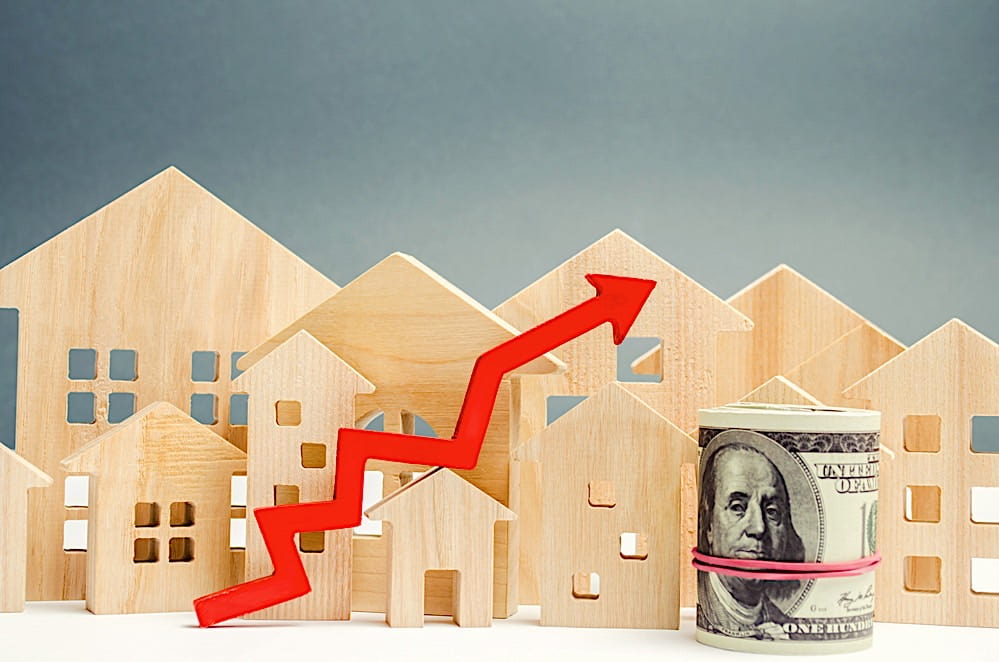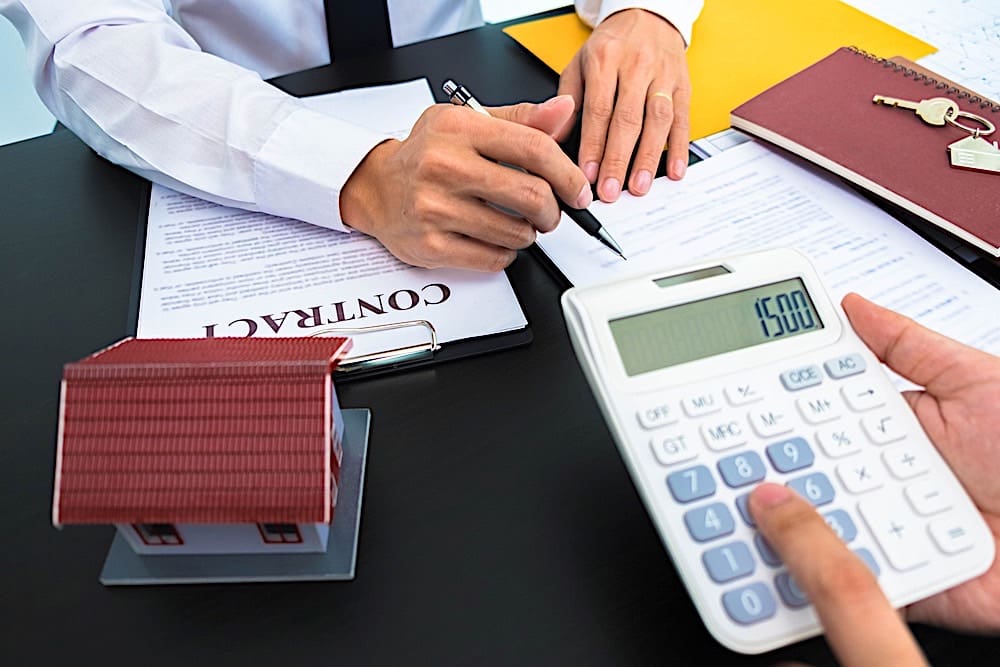Rental properties are one of the better investment vehicles in real estate. Along with tax benefits and passive income, rental property investments will produce strong returns year in and year out, no matter what the market is doing. In comparison to other types of investments, a rental property investment can safeguard investors and their money, helping to produce significant income with little-to-no effort for years to come. But what about the initial costs associated with purchasing a rental property? Better yet, what are the long-term rental property expenses that come with your investment?
Investing in rental properties is lucrative in many ways, but investors must understand the overall costs of this endeavor. Along with purchase expenses, a rental property will demand additional costs through its lifecycle. This makes it imperative for investors to understand the “big picture” of rental properties, including both the current and future costs associated with a rental property investment.
[ Want to invest in rental properties but don't know where to start? Click here to see JWB Real Estate Capital's full-service solution for a truly stress-free investing experience. ]
How To Estimate Expenses For A Rental Property Investment
Generally speaking, there are two avenues to pursue when financing a rental property: buying it as an investment to rent it out from day one, or owner-occupied. The latter entails investors purchasing the property and living in it for a required twelve months as part of the owner-occupied loan requirements.
That said, the two sides will have very different purchasing costs. For example, a rental property you intend to rent out from day one will require investors to put anywhere between 20 and 30 percent down. On the other hand, an owner-occupant property allows investors to acquire the investment with as little as 3.5 percent, thanks to FHA financing. Remember, financing a rental property will involve different mortgage financing options, which will ultimately affect the overall amount you spend.
Aside from the purchasing cost, you’ll also want to get an accurate estimate of the expenses associated with running your rental property. After all, your investment may not be worthwhile if your expenses match or exceed your potential revenue. Unpredictable variables make calculating expenses tricky. We’ve gathered three tips to help:
-
Talk to property managers in the neighborhood: The best source of accurate information in your local market is property managers since they’ll have a working knowledge of rental expenses in your neighborhood. Try calling several property managers. Let them know that you’re interested in hiring a manager, and while you’re having a conversation with them, ask them what the total expenses on the property would be.
-
Network with your local real estate investor club: Another strategy is to network with other income property owners in your area. By making friends, you’ll have an easier time getting insider information. They can tell you what they’re paying in rental property expenses, along with other tips and advice.
-
Call utility companies: Last but not least, get accurate data by contacting your local utility companies. Ask for rates and quotes, and also ask for average utility bills over the past few months. High utility costs can also be a clue to a possible defect or inefficiency at your property that will be worth investigating.
The Profit And Loss Statement
A profit and loss statement, otherwise known as a P&L, is a financial document that allows investors to track rental property finances and performance. The document includes property income, expenses, profits and losses. Investors can use a P&L to identify categories of expenses or areas where there is room cut costs and increase profit.

15 Rental Property Expenses For Investors
Aside from initial costs, a rental property investment will encompass a range of expenses. It is essential as an investor to remain informed on all the possible expenses for your investment. In doing so, you can make accurate estimations when creating a budget. The following outlines the expenses to consider when financing a rental property:
-
Property Taxes
-
Maintenance
-
Utilities
-
Property Management
-
Homeowners Insurance
-
Appraisal Fees
-
Home Inspection
-
Broker Fees & Tenant Screening
-
Marketing
-
Property Improvements
-
Accounting Fees
-
Vacancy Costs
-
Business Permits
-
Closing Costs
-
HOA
1. Property Taxes
One of the costs associated with a rental property investment is property tax. This expense, which is generally based on the jurisdiction of the property, is levied by the county in which the property is located. In most cases, this rate will be determined by a county assessor to assess the current fair market value of the area. That said, the property tax may also be tax-deductible on your tax return. Investors looking to estimate expenses regarding property tax should contact their county assessor to get the exact amount for the current property taxes.
2.Maintenance
There is no hard rule on the costs of monthly maintenance. However, most experts recommend a maintenance budget of anywhere between 10 to 15 percent of the annual property rent, while Fannie Mae suggests allocating two percent. Although maintenance costs will differ from every property, it’s imperative that investors maintain adequate funds for monthly costs related to the rental property. This includes maintenance to the outside, like exterior curb appeal and interior common areas of the property. In addition, these costs can relate to occasional repairs such as the building’s heating system, roofing, or plumbing. Overall, maintenance costs will include:
-
Landscaping and tree trimming
-
Homeowner association fees
-
Pool cleaning, chemicals, and maintenance
-
Pest control and treatment
-
Tune-ups on lawn mowers, chain saws, leaf blowers, etc.
-
Light bulbs
-
Smoke detector batteries
-
HVAC filters
-
Janitorial Items
Maintenance for a rental property is one expense that investors should never underestimate. Real estate investors need to anticipate the expenses of ownership, including actively planning and saving to meet these costs.
3. Utilities
In most cases, the tenant will pay the majority of utilities, but services like sewer and water are generally covered by the owner. This expense can range from $30 – $200 per month, depending on both the location of the property and usage of utilities. Utility expenses may include:
-
Electricity
-
Gas
-
Heating oil
-
Water & sewer
-
Trash & recycling
Like other expenses associated with a rental property investment, investors can deduct the cost of utilities from their taxes.
4. Property Management
Investors looking to streamline their rental property investment should consider integrating a property management company. Since even the best landlords need help from time to time, a professional property management company can add significant value to your investment.
Property management companies will range in size and responsibilities, but they generally consist of the following:
-
Property management companies
-
Individual property managers
-
On-site manager
-
Condominium association fees
-
Special assessments
The duties and responsibilities of a property management company include: setting rental rates, collecting rent, assigning maintenance, marketing/advertising, managing relationships, and finding new tenants. The benefits of a property manager consist of higher quality tenants, shorter vacancy cycles, better processes, fewer responsibilities, and fewer legal problems.
The cost of property management will range from 8 to 10 percent of the monthly rent or a flat annual fee. Although these additional costs will impact your bottom line, the benefit of a property management company is second to none for an investor, especially those looking to take their business to the next level.
[ Want to invest in rental properties but don't know where to start? Click here to see JWB Real Estate Capital's full-service solution for a truly stress-free investing experience. ]
5. Homeowners Insurance
Another cost-related to rental property investments is homeowners’ insurance. While this expense will vary depending on the region, this insurance cost is generally included in the mortgage payment. If not, investors will need to set aside sufficient funds to pay monthly insurance costs.
Along with homeowners’ insurance, investors may want to add Landlord insurance for rental property investments. This insurance rate, which covers investors in the case of fires, wind, theft, and ice damage, will cost anywhere from 15 percent to 20 percent more than homeowners insurance. Although it’s an added cost for investors, this expense should be seriously considered for long-term rental properties.
6. Appraisal Fees
The lender uses an appraisal fee to hire a licensed professional who will determine the property’s overall value in question. This rental property expense includes an inspection of the property compared to similar properties in the local area, recent sales that may have happened to these similar properties, and a final appraisal using all the information gathered.
It is required for a rental property investor to pay an appraisal fee of $300 – $400 for a single-family home and $500 – $700 for a multi-family property on average.
7. Home Inspection
It is essential to conduct a home inspection before investing in a rental property. A home inspection will reveal any hidden damage the seller may not be aware of. While this expense may seem inconsequential, it will actually save you money in the long run as a rental property investor.
Revealing any unknown damage such as mechanical failures, damage within hard-to-find areas, mold, or roof damage is easy for an inspector but difficult for an untrained eye. If these problems are not addressed ahead of time, you will need to make these repairs later, effectively subtracting from your profits. On average, a home inspection costs $200 – $500, depending on the property’s location and size.
8. Broker Fees & Tenant Screening
Finding tenants can prove difficult, especially for a first-time investor, however, you have the option of hiring a broker to do all the findings for you. If you plan to use a broker to find tenants for your rental property, broker fees should be added when estimating your rental property expenses. Costs may vary per broker as they vary depending on the number of responsibilities they are given.
If you plan on finding and screening tenants yourself, you must consider The Fair Trade Reporting Act, which will allow you to credit check any possible tenants. Each credit check can range between $30 – $50.
9. Marketing
Proper marketing ensures that you have a constant cash flow coming in from your investment. However, marketing your investment property without the help of a property management company will cost you.
The best marketing strategies for rental property include hiring a professional photographer to highlight the best aspects of your property, writing enticing and creative descriptions of the property, advertising on real estate websites, and social media marketing, to name a few. As a rental property investor, marketing is definitely something to keep in mind as you budget your expenses.
10. Property Improvements
Besides standard repairs, you may want to upgrade your investment to make it more enticing for potential tenants. This may include updating your appliances, purchasing new furniture, or installing new hardware such as windows or fences.
These rental property expenses will vary in cost as it pertains to the property’s current state. For example, if you purchase a distressed property, improving it to the point that it attracts tenants will cost you a higher amount than purchasing a modern property.
11. Accounting Fees
If you manage the property yourself, hiring an accountant to handle bookkeeping and keep your transactions in order may be useful. Depending on the accountant themselves and the number of responsibilities given, this rental property expense may vary.
12. Vacancy Costs
Due to tenant turnover, vacancy costs are a rental property expense that may be impossible to avoid. There are strategies to reduce turnover, however. You can use a rental property calculator to determine what portion of the year a rental property in a certain location does not have tenants. This will help pinpoint when turnover will be at its highest and accurately predict when turnover will be at its highest.
13. Business Permits
Some areas require you to have a special business permit for renting out a property. As an investor, you should research what permits are required to run a rental property business in your desire area and add any costs to your rental property expenses.
14. Closing Costs
Closing costs are a rental property expense that should not be overlooked when setting your budget. These costs are expenses someone must pay in any closing of a real estate transaction. Understanding how closing costs work will help you accurately estimate your rental property budget and expenses. On average, closing costs on a rental property may range from 2% – 5%.
15. HOA
Before you purchase the investment property, confirm whether or not there is an HOA in the neighborhood. This is extremely common with condo buildings, and as the owner you will be responsible for HOA costs. Many are charged either quarterly or annually, and they can vary greatly in price. Note that HOA fees may be considered a tax deductible expense for rental property owners, which can help offset the costs.

Tax Deductions For Rental Properties
Tax deductions can heavily reduce rental property expenses and turn a profit as a result. There are several tax benefits that apply to rental property expenses to help you spend less and earn more from your investment. Here are the biggest tax deductions you should consider when investing in rental properties:
-
Interest: Interest used on expenses to improve a rental property is tax deductible. This includes interest paid on mortgages or loans and credit card interest used to improve your property.
-
Repairs & Maintenance: Repairs can be fully tax deductible within a one year, however improvements on your property may have to be fully depreciated over 27 and a half years.
-
Personal Property Cost Deduction: Personal property expenses on the rental property you own like appliances, furniture, and gardening equipment are tax deductible.
-
Pass-Through Tax Deduction: Created by the Tax Cuts and Jobs Act, the pass-through tax deduction is up to 20% of net rental income.
-
Travel Expenses: There are tax deductions for any travel expenses used for your rental property such as tenant showings, going to a store for supplies, or travel expenses for long-distance investors.
-
Home Office Expenses: Deductions apply for your own workshop used to maintain the rental property or any part of your personal residence used to conduct business.
-
Wages For Employees: Tax deductions apply for any wages paid to employees such as an on-site leasing manager, independent contractors, landscapers, or handymen.
Summary
Rental property expenses will range from property to property and area to area. For investors, the appeal is that the majority of these rental property expenses are tax-deductible. Even if it costs you upfront, these expenditures will ultimately serve as an advantage when tax season comes. Investors looking to build long-term wealth, including passive income for retirement, should consider a rental property investment.
Start generating passive income with single-family rental properties!
If you're interested in investing in real estate, but don't have the time or experience to start, click the banner below to see JWB Real Estate Capital's full-service solution for a truly stress-free investing experience.

